Poon Hill Trek
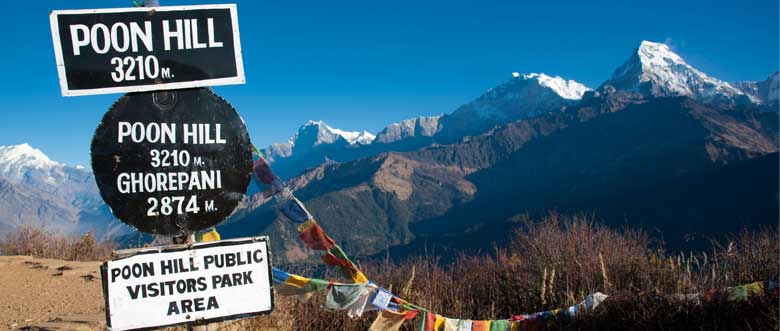
Trip Overview
Iteneary Detailed
Includes & Excludes
FAQ
Map

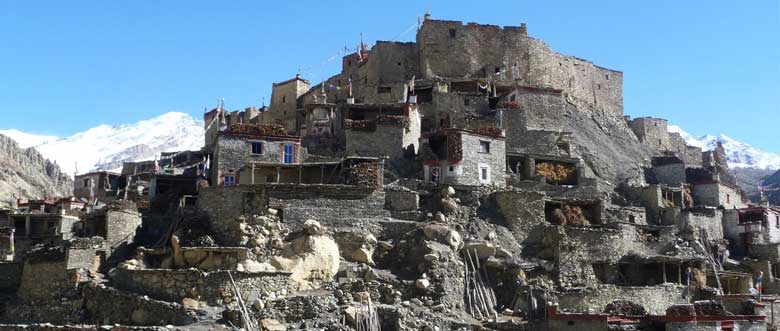
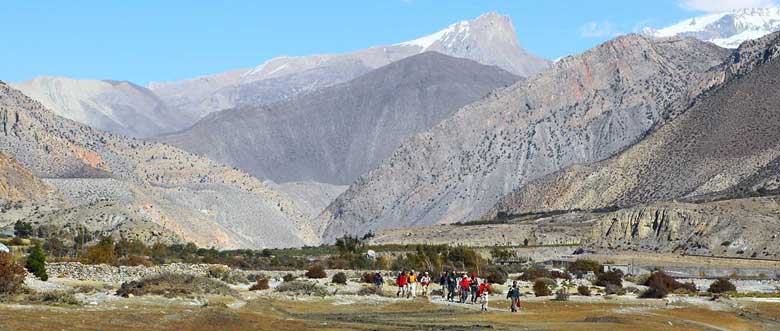
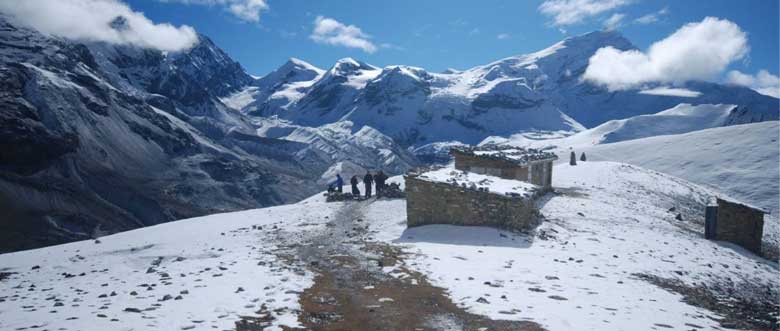
Since it opened to foreign trekkers in 1977, the Annapurna Circuit has become renowned as one of the most spectacular trekking routes in the world with lush green valleys and fascinating villages that offer impressive snow-capped views of the white Himalayas. Starting from less than 1,000 meters, it gives us a chance to explore the Himalayas from bottom to top and from many different angles and perspectives. This three week trek starts right from Besisahar which goes along the Marshyangdi River, with great views of Manaslu and Himal Chuli to the east. This magnificent trek leads you to the fine village, inhabited by a wide diversity of people from different ethnic groups, offering spectacular and majestic views of the Himalayas. Continuing to the north of the main Himalayan range to the high and dry Tibetan Plateau, the scenery is equally breathtaking.
The highest point of the Annapurna Circuit trek is the Thorung La pass at the top of the valley at 5,416m. Due to the difficulties of crossing the pass, the circuit is usually walked in a counter clockwise direction. Traveling clockwise the longer ascent and shorter descent from west to east is too much for many people to manage in one day.
As we descend to the west at Muktinath, from pass we continue to the barren Tibetan like village of the Kali Gandaki - the world's deepest gorge, passes between the giant Annapurna and Dhaulagiri mountains. After you cross the Thorung La pass from Manang to Muktinath the final seven days of the circuit trek are the same as the Jomsom Trek from Pokhara, but in reverse.
Our Annapurna Circuit Group trek departs every week from Kathmandu. Private treks can be arranged any time. View our selected departure Dates here.
Itinerary Overview
Day 01 - Arrival at the Tribuwan International Airport in Kathmandu (1,345m).Overnight at a hotel.
Day 02 - Pre-trip meeting and sightseeing around the Kathmandu valley. Overnight at a hotel.
Day 03 - Drive to Besisahar (830m) by Public Bus - 7 hrs. Overnight at a guesthouse.
Day 04 - Trek to Bahundanda (1,310 m) - 5 hrs. Overnight at a guesthouse.
Day 05 - Trek to Chamje (1,400m) - 5 hrs. Overnight at a guesthouse.
Day 06 - Trek to Bagarchhap (2,160m) - 5 hrs. Overnight at a guesthouse.
Day 07 - Trek to Chame (2,630m) - 5 hrs. Overnight at a guesthouse.
Day 08 - Trek to Pisang (3300 meters) 5 hours. Overnight at a guesthouse.
Day 09 - Trek to Manang (3,540m) - 5 hrs. Overnight at a guesthouse.
Day 10 - Acclimatization day at Manang village. Overnight at a guesthouse.
Day 11 - Trek to Yak Kharka (4,000m) - 5 hrs. Overnight at a guesthouse.
Day 12 - Trek to Thorong Phedi (4,450m) - 5 hrs. Overnight at a guesthouse.
Day 13 - Trek to Muktinath (3,800m) via Thorung La pass (5,416m) - 8 hrs. Overnight at a guesthouse.
Day 14 - Trek to Marpha (2,670m) - 6 hrs. Overnight at a guesthouse.
Day 15 - Trek to Ghasa (2,010m) - 6 hrs. Overnight at a guesthouse.
Day 16 - Trek to Tatopani (1,190 m) - 5 hrs. Overnight at a guesthouse.
Day 17 - Rest and relaxing day at Tatopani. Overnight at a guesthouse.
Day 18 - Trek to Ghorepani (2,810m) - 6 hrs. Overnight at a guesthouse.
Day 19 - Hike to Poon Hill (3,210m) and trek to Tikhedunga (1,570m) - 5 hrs. Overnight at a guesthouse.
Day 20 - Trek to Nayapul (1,010m) - 3 hrs. Drive to Pokhara - 1hrs. Overnight at a hotel.
Day 21 - Pokhara city tour. Overnight at a hotel.
Day 22- Drive back to Kathmandu (1,345m) and farewell dinner. Overnight at a hotel.
Day 23 - Transfer to the international airport for your final departure
The above information is a guide and standard template of what we provide. Our trip can be customized at your request to accommodate your specific requirements.
NOTE: During the trip; weather, local politics, transport or a multitude of other factors, that are beyond our control can result in a change of itinerary. It is, however, very unlikely that the itinerary would be substantially altered; if alterations are necessary the leader will decide what is the best alternative, taking into consideration the best interests of the whole group. Where a change does occur, we do everything we can to minimize its effect, but we cannot be responsible for the results of changes or delays.
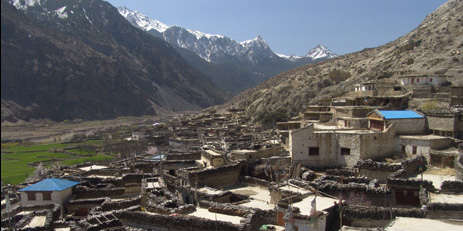 Day 01 : Arrive in Kathmandu. Transfer to Hotel by HTB Team.
Day 01 : Arrive in Kathmandu. Transfer to Hotel by HTB Team.
Day 02 : Cultural tour to Boudhnath Stupa and Hindu Cremation site / Trek preparation.
Day 03 : Drive to Dharapani. Overnight Stay in Dharapani.
Day 04 : Trek from Dharapani to chame
Day 05 : Trek from Chame to Upper Pissang
Day 06 : Trek from Upper Pissang to Ngawal
Day 07 : Trek from Ngawal to Manang ( 3540m)
Day 08 : Rest day at Manang (3540m)
Day 09 : Trek from Manang to Yak kharka (4018m)
Day 10 : Trek from Yak Kharka to Thorang Phedi (4450m)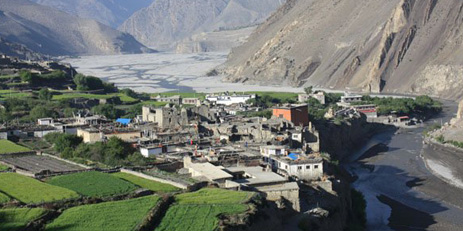 Day 11 : Cross Thorangla (5416m) and Overnight at Muktinath (3760m)
Day 11 : Cross Thorangla (5416m) and Overnight at Muktinath (3760m)
Day 12 : Trek from Muktinath to Kagbeni (2800m)
Day 13 : Trek from Kagbeni to Jomsom (2720m)
Day 14 : Fly or Drive to Pokhara
Day 15 : Rest Day in Pokhara
Day 16 : Fly or Drive to Kathmandu
Day 17 : International Departure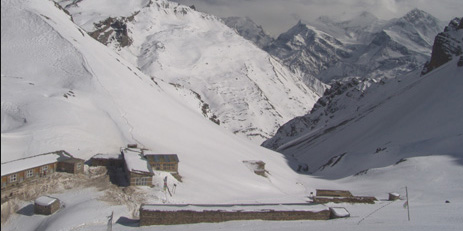
Cost Includes
- Airport / Hotel / Airport pick up & drop by private tourist vehicle.
- Standard twin sharing accommodation in a three star hotel in Kathmandu and Pokhara; Breakfast included. (3 nights in Kathmandu and 2 nights in Pokhara)
- Guided city tour in Kathmandu and Pokhara by private tourist vehicle.
- All your standard Meals during the trek (Breakfasts, Lunches and Dinners).
- Lodges, Guesthouses accommodation during the trek (17 nights Trekking Guesthouse in twin sharing and occasionally dormitory style).
- Local Himalayan Trail Blazer licensed English speaking guide.
- The required number of local staff and porters to carry your luggage during the trek (We assign one porter for every two guests).
- Food, accommodation, salary, insurance, equipment and medicine for all staff.
- Annapurna Conservation Park permits and TIMS permit for trekking.
- Sleeping bag by Himalayan Trail Blazer (which need to be returned after the trek).
- Surface transfer from and to Kathmandu.
- Sightseeing/Monument entrance fees in Kathmandu and Pokhara.
- Farewell dinner in typical Nepali Restaurant with cultural dance show on second last day (On Day 22).
- All our government taxes, vat, tourist service charges.
- Official expenses.
Cost Does not Include
- Lunch and dinner whilst in Kathmandu.
- Travel insurance which covers emergency Rescue and Evacuation.
- International airfare and airport departure tax.
- Nepal entry visa; you can obtain a visa easily upon your arrival at Tribhuwan International Airport in Kathmandu. (Tourist Visa with Multiple Entries for 30 days can be obtained by paying US $ 40 or equivalent foreign currency. Similarly, Tourist Visa with Multiple Entries for 90 days can be obtained by paying US $ 100. Please bring 2 copies of passport size photos).
- Alcoholic, hot and cold drinks.
- Personal trekking Equipment (See the trekking equipment page).
- Tips for trekking staff and driver (Tipping is expected).
- Any others expenses which are not mentioned on 'Price Includes' section.
What type of shape do I need to be in, is this trip for me?
Annapurna Circuit Trek is suitable for average people who are moderately fit, thus no previous experience is required. Some physical fitness programs such as running, swimming, hiking is recommended before you embark on your journey. Persons suffering from a pre-existing medical condition must seek medical advice/consent before considering the trek. Whilst on the trek, it is common to experience some discomfort before being fully acclimatized. To prepare for trek you should begin training at least two to three months before your departure. As a guideline, an hour of aerobic exercise three to four times per week would be considered a minimum requirement. The best preparation is bushwalking involving relatively steep ascents and descents. If you can manage a couple of valley floor to ridgeline ascents per comfortable and able to enjoy the trek to the fullest. They are physically strong, sharp-witted and have an incredibly positive attitude towards a life that we would consider extremely tough. There is something about a trek in the Himalaya that draws you back time and time again. For keen walkers it is a paradise and even avowed non-walkers find that one foot just seems to follow the other, drawn by the appeal of what lies beyond.
Will somebody come to pick me up at the airport upon my arrival?
Yes, our airport representative will be there to greet you at the airport. S/he will be displaying an Himalayan Trail Blazer sign board outside the airport terminal. Upon arrival, you will be transferred to your hotel by our tourist vehicle.
What sort of accommodation can I expect in Kathmandu, pokhara and in trekking?
We use standard rooms at three star hotels in Kathmandu and Pokhara with breakfast included. Along the trekking routes, teahouses/lodges generally provide basic clean facilities with a mattress and a quilt or blanket. We can also offer you Himalayan Trail Blazer sleeping bags if needed (to be returned after the trip) but it is a good idea to always have your own sleeping equipment.The lodges in trekking routes usually provide single and double rooms, or occasionally a dormitory. At times when possible, dining will be around a bon fire. In tea houses, food will be prepared in the kitchen which you should not enter without permission. The toilet in tea houses provides essential and basic facilities and are always outside the room.
What sort of food can I expect in trekking?
Most teahouses (lodges) in Annapurna Circuit Trek trails cook a delicious range of mostly vegetarian fare. Pasta, tuna bakes, noodles, potatoes, eggs, daal bhat(rice and lentils), bread, soup, fresh vegetables (variety depends on the season) and even some desserts like apple pies, pancakes, and some interesting attempts at custard. You will find a lot of garlic on the menu because it assists with acclimatization – eat some every day. In many larger villages you may find some meat items on the menu. You can always get hot chocolate, tea, and hot lemon drinks, as well as soft drinks, and treats like chocolate and crisps. Each day dinner and breakfast will be at a lodge you'll stay at while lunch will be taken on the way to destination.
What mode of transportation do you use?
Himalayan Trail Blazer is all about providing you with local insights, lifestyle as well as adventure. Depending on the nature of the travel, the transportation to and from the destination varies from domestic flights to vehicular transportation to even piggyback rides on mules and yaks. We provide you only those options which enhance your local experience while allowing you to travel comfortably and efficiently. We use private tourist vehicles for sightseeing, city tours and pickups. Depending on the group size we use cars, minibus, vans or alternatively 4WD SUVs, more maneuverable in travelling along the narrow and bumpy roads of Nepal. All the vehicles are usually air-conditioned unless we are travelling in cooler areas.
What is the best season for this trekking?
Our trekking season extends from mid- September to May. From early September the monsoonal rains decrease. By end of September through to December the weather is usually stable with mild to warm days, cold nights. February, March, April, May, June, October, November, December are the best time to do this trek.
What is the weather & temperature like in trekking?
Weather in the mountains is notoriously difficult to predict. At night it is generally cooler the days are generally warm. Winter (January and February) will be bit colder but the days can be quite beautiful and warm if the sun is out. There will be bit of snow during the month of January, February and December. It is also important to make sure that you can stay warm and dry in just about any conditions. Expect the unexpected! The temperature could be as high as 20 deg C to -10 deg C low.
I m a Vegeterain, is that a Problem ?
No problem at all because the lodges mostly serve the vegetarian meals. We always recommend our clients to eat vegetarian meals to avoid the food poisoning, eating heavy meals and non- vegetarian meals at the high altitude is not really safe for the stomach.
Do your guides have trekking guide certificates from the Hotel Management and Tourism Center? Have they received first aid training for high altitude?
Yes, they have all received a 45-day training from the Hotel Management and Tourism Center in Nepal. The guides have also received high altitude first aid training from KEEP (Kathmandu Environmental Education Project).
Do we book our own international flights to and from Nepal?
Yes, you need to book your own International flights. We are a local agent and it would cost you significantly higher to book through us.
Can I charge my digital camera or other equipments on my trip?
These facilities will be available in most of the places in your hotel reception by paying some service charges. Remember to bring TWO and THREE pin travel adapters!
Is there any communication while we are on trekking?
There are telephones in some villages along the trekking routes from which you can make international calls. All our guides are equipped with the local mobile phone. You may wish to pass the number of our guide to your family for the callback or you can make a call from the guide’s mobile and pay him directly for the international call too.
Can I use credit cards in the places I visit in trekking?
In Kathmandu and Pokhara, yes - to some extent. Once you are out of the cities, all you need is cash.
How much additional money do I need per day?
It depends on your spending habits. Generally, in Kathmandu, you can allocate USD 10 to USD 15 for a lunch and a dinner. USD 10 to USD 15 per person a day will be enough to buy bottles of water, chocolates, pay for the hot shower and a few drinks during the trekking.
Do I need to tip my guide and porters? How much would that be?
This is a difficult thing to gauge. We have seen everything from USD 20 to USD 1000 per person for guides and porters. Tipping is not required, but a small gesture of thanks to your guides and local porters. The level of the tip should reflect the level of satisfaction from and personal involvement with your guide. However, we recommend you to spend minimum 10% of your total trip cost for tipping entire local staffs, the ratio of tipping guide and porter will be given to you at the pre-trip meeting in Kathmandu before starting the trek.
What opportunities will I have for shower along the trek?
In major places, we arrange guesthouse with hot shower. And in rest of the places, water in bucket will be provided for shower.
Is Himalayan Trail Blazer's staff insured?
Our company insures all our trekking staff members, including guides, cooks, Sherpas and porters.
Can I add extra days to my trekking trip?
Holiday should never be about making it to the final point quickly. Along your trek we can add days at your request with additional costs to cover guides, porters, accommodation and food.
Do you use yaks/porters on the trek or do we carry all of our own gear?
Whilst on the trek, our porter will take care of your luggage. All you need to carry is your small day bag for your personal belongings like camera, water bottle, sun cream etc only.
I would like to extend my holiday, any recommendations?
Yes, there are a plenty of options and choices to extend your holiday before or after your main trip.
Can I obtain the visa for Nepal upon on arrival at the airport?
YES, you can obtain a visa easily upon your arrival at Tribhuwan International Airport in Kathmandu. Tourist Visa with Multiple Entry for 30 days can be obtained by paying US $ 40 or equivalent foreign currency. Similarly, Tourist Visa with Multiple Entry for 90 days can be obtained by paying US $ 100. Please bring 2 copies of passport size photos.
What immunizations will I need?
No vaccinations are compulsory in Himalaya, but we do recommend you are covered for diphtheria & TB, hepatitis A, hepatitis B, *malaria, typhoid, polio and tetanus.
We also recommend:
A dental check-up prior to traveling.
That you know your blood group in case of emergency.
If you have any per-existing medical conditions which might affect you on tour, you make these known to your tour leader and Himalayan Trail Blazer at the time of your booking.